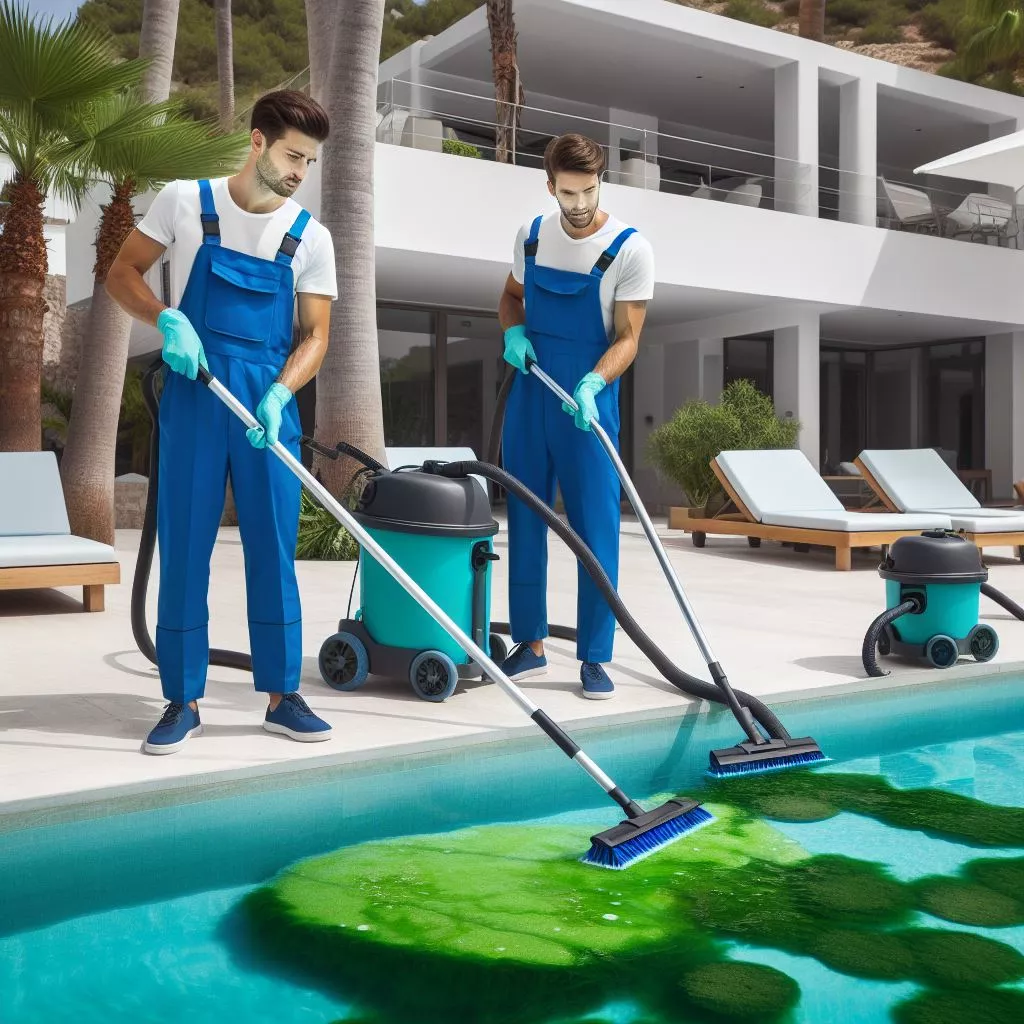Pool owners understand the importance of maintaining a clean and algae-free swimming environment. Algaecides are commonly used to prevent and control algae growth in pools. However, like many pool chemicals, algaecides can lose their effectiveness over time. In this article, we’ll delve into the indicators of expired or deteriorated pool algaecides, the consequences of using ineffective products, and the proper methods for determining and handling expired algaecides.

Signs of Expired Algaecides
Changes in Color or Consistency: One of the primary signs that an algaecide may have expired is a noticeable change in color or consistency. If the liquid algaecide appears cloudy, separates into layers, or undergoes a significant color shift, it may indicate degradation.
Foul or Unusual Odor: A strong, unpleasant odor emanating from the algaecide is a clear signal of potential expiration. Algaecides typically have a distinct but not overpowering scent. Any deviation from the usual smell should be investigated.
Ineffectiveness Against Algae Growth: The most crucial indicator is the algaecide’s performance. If the product no longer effectively prevents or eliminates algae, it may be a sign that its active ingredients have deteriorated.
Expiry Date: Check the expiration date on the algaecide container. Many algaecides come with a specified shelf life, and using them beyond this date can compromise their effectiveness.
Consequences of Using Expired Algaecides
Algae Proliferation: The primary purpose of algaecides is to inhibit algae growth. Expired algaecides may fail to fulfill this function, leading to uncontrolled algae proliferation and potential water quality issues.
Water Imbalance: Ineffective algaecides may introduce imbalances to the pool water chemistry. This can impact pH levels, alkalinity, and other parameters, creating an environment conducive to algae growth rather than preventing it.
Reduced Pool Clarity: Expired algaecides may not effectively clarify the pool water, leading to reduced water clarity. This can affect the overall aesthetics of the pool and diminish the swimming experience.
Proper Handling of Expired Algaecides
Regular Inspection: Periodically inspect the algaecide container for any signs of expiration, such as changes in color, consistency, or odor. Regular inspections can help identify potential issues before they impact pool maintenance.
Storage Conditions: Properly store algaecides in a cool, dry place away from direct sunlight. Adhering to recommended storage conditions helps extend the shelf life of the product.
Read and Follow Instructions: Always read and follow the manufacturer’s instructions regarding the application, storage, and shelf life of the algaecide. This information is crucial for maximizing the effectiveness of the product.
Dispose of Expired Algaecides: If you confirm that your algaecide has expired, it’s essential to dispose of it properly. Contact your local waste management facility for guidance on the appropriate disposal method for expired pool chemicals.
Conducting a Simple Efficacy Test
To verify the effectiveness of your algaecide, you can conduct a simple efficacy test:
Perform a Water Test: Test your pool water for algae growth. If you notice signs of algae, such as discoloration or visible growth, it may indicate that the algaecide is not performing as expected.
Apply Algaecide as Directed: If the initial test suggests ineffective algaecide, apply a fresh batch of algaecide according to the manufacturer’s instructions. Monitor the pool for changes in water quality and algae growth.
Consult a Professional: If doubts persist regarding the algaecide’s effectiveness, consider seeking advice from a pool professional. They can conduct more comprehensive tests and recommend appropriate actions.
Conclusion
Ensuring the effectiveness of pool algaecides is crucial for maintaining a clear and inviting swimming pool. By being vigilant about signs of expiration, adhering to proper storage practices, and conducting simple efficacy tests, pool owners can confidently prevent algae growth and enjoy a clean and well-maintained pool environment. Regular maintenance, including the use of effective algaecides, is key to a refreshing and enjoyable swimming experience.

 Instant
Quote
Instant
Quote Email
Us
Email
Us